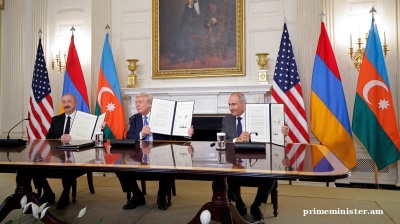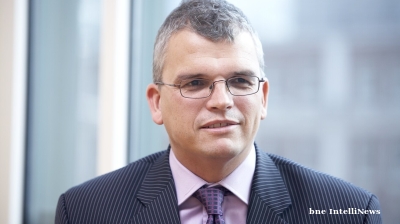As I underlined three years ago (see my article published under the aegis of the National Bank of Romania (BNR) in Central Bank Journal of Law and Finance no. 2/2017), interest rates are macro-economic tools of great importance for central banks and commercial banks in any economy. And not only for them. Therefore, the most obvious question under the current pandemic circumstances is how low could the interest rates be fixed by the central banks? What is the meaningful level of reduction after which basically the interest rates do not play their assigned macro-economic role anymore? The recent discussions about the negative interest rates in developed countries (see the recent case of the United Kingdom where the Bank of England decided on August 6 to maintain its rate at an historical level of 0.10%) will soon reach Eastern Europe’s central banks, banks, analysts, politicians and ordinary peoples as well.
Low interest rates have positive effects in market economies, but they can also have a very perverse negative impact. There is no doubt that a low interest rate helps businesses (small and medium-sized enterprises and large companies alike) as they have to pay less for borrowings. Also all efforts are made to facilitate access to credits for those needing them, especially under the very difficult current circumstances. However, low interest rates could also mean that “non-performing economic agents” manage to remain in business longer than they could have done otherwise (with interest rates established at appropriate levels). In fact, low interest rates help “zombie” companies to survive, but the consequence of this is that the capital is not properly allocated. As a more worrisome conclusion, one could state that by keeping the interest rates at artificially low levels or even negative, the economy of the respective country will finally suffer due to lack of a proper metre to measure its efficiency. Distorted labour productivity, low(er) levels of savings and investments are just signals of such distressing cases. All of these, of course, are more so during the current pandemic crisis in both developed countries and in the emerging ones in Eastern Europe.
While supporting the modest economic increase, the historically low level of interest rates clearly distorts the distribution of the national wealth and the saving and investment processes. The fate of the savers (amongst which are the pension funds and large numbers of individual pensioners) may not be the highest priority for the decision-makers during the pandemic. The same holds true for the euro area where the European Central Bank had its rate at zero for some time and at -0.50% now. This could have a negative economic impact (as the savings of the population will continue to decrease) but, more importantly, a social impact that is difficult to quantify. The long-suffering savers will still have to wait, while negligible interest is paid to them on their deposits.
Controlling inflation is a key objective of both major international financial institutions such as the International Monetary Fund and of the countries themselves. At prime facie, it seems that the inflation could be primarily influenced (“controlled” is maybe too much to admit, but is not far from the truth) by changing the interest rates, starting with prime rates or refinancing rates, which are normally amongst the attributions of the central banks, together with the quantitative easing and minimum reserve requirements. However, it is safe to state that in many cases, the central banks do not have in mind only the needs of the economy at the specific time of decisions. For instance, during the local and/or general election periods, the rates are set in a specific way so that the voters, or at least the largest part of them, are not upset. Usually the central banks are mindful of the implications of increasing the interest rates on (mortgage) borrowers as well as on savers. As such, in some cases, the interest of the borrowers prevails as compared to the weary savers, as the interest rates are kept very low. Recent examples of policies on how such interest rates are “conducted” could be easily found both in developed markets (the US, the United Kingdom, Japan, Sweden, etc.) and in the European emerging markets as well (the Russian Federation, Romania, Moldova, Serbia, North Macedonia, etc.) as presented in the table below.
Interest rates and inflation in selected European countries, Aug. 2017 - Aug. 2020 (%)
|
Country |
Interest rates as of Aug. 2017 |
Current level as Aug. 2020 |
Reduction during the last 3 years |
Inflation |
|
12.50 |
6.00 |
6.50 |
2.40 |
|
|
12.00 |
7.75 |
4.25 |
5.20 |
|
|
9.00 |
4.25 |
4.75 |
3.40 |
|
|
8.00 |
3.00 |
5.00 |
4.30 |
|
|
4.00 |
1.25 |
2.75 |
1.60 |
|
|
3.25 |
1.50 |
1.75 |
1.70 |
|
|
1.75 |
1.50 |
0.25 |
2.60 |
|
|
1.50 |
0.10 |
1.40 |
3.10 |
|
|
0.90 |
0.60 |
0.30 |
2.90 |
|
|
0.00 |
0 |
0 |
1.60 |
|
|
0.00 |
0 |
0 |
0.30 |
|
|
For Information |
|
|
|
|
|
-0.50 |
0 |
0.50 |
0.70 |
|
|
-0.65 |
-0.60 |
0.05 |
0.30 |
|
|
-0.75 |
-0.75 |
0 |
-0.90 |
Sources: Central Banks and Trading Economics website (http://tradingeconomics.com consulted on August 8, 2017 and August 7, 2020, respectively).
In this latter group of countries, the “interest rate” instrument started to be effectively utilised at the beginning of the ’90s, after years and years in which the rates clearly played just a passive role to stimulate production and trade (in those years, the rates were of course administratively set with no relation to the markets). Moreover, back to the early days of the transition, the dynamics of the interest rates were very “erratic”, to say the least. In a macro-economic environment in which GDP sharply declined, investments were sparse, no solid savings were achieved and the national currencies suffered huge depreciations, the refinancing rates had no alternatives but to reach in some cases impressive/historical low levels. On top of everything, the downward pressure was exacerbated by the 2020 pandemic which hit hard both developed and developing markets.
If interest rates are seen as “the price of money”, then it should be clearly stated that rates should be positive in real terms, namely that they should be sufficiently high to cover the level of inflation in the respective country. Otherwise, any currency loses its purchasing power, the trust and backing of the population. Many times, interest rates are established with the evolution of the currency in mind, but there are clear cases in which the political factor interfered, especially during election periods and/or in such distressing cases as the current one determined by the pandemic, as presented in the graph below.

The situation could not be more different nowadays, as compared with the one prevailing before the pandemic. With the notable exceptions of Ukraine, Belarus and the Russian Federation, the current level of refinancing interest rates are well below 2-3%, which is where the rates should normally be now. For comparison reasons, the table above presents the case of Sweden, Denmark and Switzerland, all developed countries, where the rates set by the central banks are zero or negative, with controversial results so far. If maintained for long term, most likely they will have damaging repercussions.
The case of Romania is also illustrative from this point of view. During the early ’90s, interest rates were established at high levels (end-year lending rates per annum: 86.4% in 1993, decreasing, but still very high, at over 55% in 1997) in order to alleviate the high depreciating pressure on the leu and to cover the hyper-inflation of those days. These were the years when ROBOR (the daily average of interest rates quoted by the Romanian commercial banks) reached its historical maximum at 226% on March 6, 1997. It was an extreme high, although its utilisation was then rather limited to transactions undertaken by a limited number of companies. During the current pandemic, Romania reduced its monetary policy interest rate to 1.50% per annum, in accordance with the data published by the BNR on August 5, 2020. Also, ROBOR itself was at a very low level of 2.19% on August 1, 2020 as compared with 3.65% registered in October 2018. The situation in Romania could not be more different as compared to the mid-’90s. And the same holds true for many other countries in transition.
As mentioned, the extremely low level of refinancing rates (supporting the concept of “cheap money”) could be good for stimulating production, service, trade etc., but it has a very negative impact on deposits, especially on the population’s deposits and its saving attitude. Of course, there is no reason to save in a depreciating currency which is not producing any meaningful interest (hence the case for cryptocurrencies). Moreover, the trust of the population in the currency is diminishing as the real purchasing power of the respective currency is declining, especially if looked at in real terms. The situation of many currencies of the European countries mentioned above and their refinancing rates is very similar.
According to Trading Economics, there are currently 22 countries in Europe with refinancing rates at 0%, mainly from the Eurozone. There are also three other countries with the interest rates just above 0%. In all of these cases, the interest rates do not cover the levels of inflation, which is likely to be exacerbated by the pandemic. This is a serious macro-economic distortion. The discussion about negative rates (and how far they can go downwards) is more relevant than ever. This is an unorthodox solution as are the cases of quantitative easing. As the results of conducting negative interest rates so far are at the best case “non-conclusive” or controversial, it is quite clear that all European countries are now in unchartered waters. Maximum prudence will be required as the central banks may not have more ammunition in reducing their key rates. For the time being, keeping some dry powder/manoeuvring space will be the wisest decision. The pandemic is not over yet and nobody knows exactly how long it will last.
Alexandru M. Tanase is an independent consultant and former associate director, senior banker at the EBRD and former IMF advisor. These are personal views of the author. The assessments and views expressed are not those of the EBRD and/or of the IMF and/or of any quoted institution. The assessment and data are based on information as of early-August 2020.
Opinion

COMMENT: US-brokered Armenia-Azerbaijan peace deal exposes Russia’s strategic failures
The recent peace breakthrough between Armenia and Azerbaijan is a major diplomatic win for the United States and a setback for Russia, according to a new report published by the Atlantic Council.

COMMENT: Why Beijing will never take Taiwan
Xi Jinping needs to think again before he sends so many young Chinese men and women to their deaths on Taiwan, for if the PLA does one day dare to land, they will be buried here.

COMMENT: Ukraine’s coming financial storm
“A crisis is drawing ever closer. It will break in Ukraine, but it won’t begin on the frontlines, where the country’s battle-weary brigades continue to impose a brutal cost on the Russian invader," writes Timothy Ash of BlueBay Asset Management.

BEYOND THE BOSPORUS: Performance postponed. Hotly anticipated “CHP” trial pushed into October
Every Turk up and down the country has an opinion on what Erdogan is up to.




